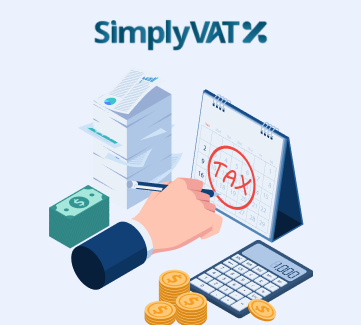Before IOSS was introduced in July 2021, VAT in the EU was complicated. Whether you needed to register for VAT in an EU Member State depended on how much revenue you had made in that country. Each country had different thresholds, which changed depending on where your business was based. There are 27 EU countries, which could have meant 27 VAT returns, depending on the size of your business. Obviously, that’s quite a lot of paperwork (not to mention expensive).
This complicated system was putting people off from doing business in the EU, so it had to change. In July 2021 the EU introduced Import One Stop Shop (IOSS), a tax scheme designed to make VAT compliance simple. Instead of thresholds and multiple registrations, businesses selling low-value goods to the EU can register for IOSS.
Even now, the expectation that the tax system will be too difficult to navigate means that few international businesses are taking advantage of the EU single market. 450 million people live in EU countries, and more are shopping online every year. IOSS makes it easy for you to reach this huge pool of potential customers.
What is IOSS?
IOSS is one of the One Stop Shop EU VAT schemes. Registering for the scheme allows you to collect and report VAT on your sales to EU customers. This means that shipments passing through EU customs won’t be held up by unpaid Import VAT. Your customers will have already paid it at checkout.
IOSS focuses on the imports of goods (hence Import One Shop Shop) and only covers:
- Business-to-Consumer (B2C) sales
- Goods that are outside the EU when they’re sold
- Shipments with an Intrinsic Value €150 or below
As an example, let’s say your business is based in the USA, and you want to sell your dog toys to people in Poland. You register for IOSS, and when a Polish customer purchases a $20 chew toy for their poodle, you charge them Polish VAT on the cost of the chew. You’ll report that sale on your IOSS return and pass the VAT you collected to the Tax Authority. Then, you package the chew toy in your warehouse in Atlanta, Georgia, and ship it. When the parcel gets to Polish customs, it sails straight through to your customer’s door.
What’s the benefit of registering for IOSS?
Registering for IOSS makes doing business in the EU easier. There are two main benefits:
A Better Customer Experience
As much as international business are still wary of selling to the EU, people in the EU are wary of buying from international brands. The reason is that they’re unsure how much in total the whole order will cost them. Customers see orders being held at customs as a surprise charge, and often blame sellers. Shipping goods with IOSS prevents this. Delivery is faster and cart abandonment reduced when customers can be confident in their purchase.
Less Admin
Every VAT registration you have comes with a return you have to file, often monthly. Prior to IOSS, this meant that you could face filing 27 returns a month if you wanted to reach customers in every EU State. Outside of the man hours involved in all that compliance paperwork, it was an expensive process. Each registration could cost thousands of euros. IOSS cuts out nearly all the paperwork and costs, and still gives you access to all the EU.
Can I register for IOSS?
IOSS is totally optional, and as long as you have reason to, anyone can register their business for it. Whilst there are rules on how you register, IOSS doesn’t have any business specific requirements. Instead, we need to look at your sales and determine whether they qualify for the scheme, and in turn whether you make enough qualifying sales for it to be worthwhile.
If you can say yes to everything on this list, your sale qualifies for IOSS
- The sale is B2C
- The sale is of goods, not services
- The goods will be shipped in a consignment with an Intrinsic Value of €150 or less
- The goods aren’t subject to excise duties
Excise duties are another indirect tax that applies to alcohol or alcoholic drinks, energy products and electricity and tobacco products. The Intrinsic Value of a shipment is the price your customers paid you for the goods you’re sending them. This doesn’t include other costs like shipping or insurance unless you included them in the prices of the goods.
If the sale doesn’t meet all these criteria, it doesn’t qualify for IOSS, and you can’t use the scheme to report it. If most of the goods you sell pass the Intrinsic Value threshold, or your customer base is primarily other businesses (B2B), then IOSS might not make a good fit for you. It really depends on your volume of sales.
How does IOSS work for Ecommerce Brands?
How IOSS works for you will depend on where the qualifying sale takes place: on your website or on an online marketplace. Under EU law marketplaces like Amazon and eBay have to collect VAT on behalf of sellers, so they are registered for IOSS in the EU. In this case, when an EU customer buys something from you (that’s not in the EU at the point of sale), you ship it to them using the marketplace’s IOSS number.
If your sales happen on your own website, you’ll need to register for IOSS yourself. Once you’re registered, you have to update your site to show EU customers their local VAT rate. Unlike in the USA, where Sales Tax is added at checkout, in the UK and Europe we include the VAT in the display price. This sounds like a hassle, but depending on how you built your store there are a lot of solutions to make this happen automatically. If your store is built on Shopify, for example, some settings make this happen automatically.
When a qualifying order is placed by a customer in the EU you charge them VAT at their local rate. You’ll pack the order and ship it, securely communicating your IOSS number to the person in charge of declaring the goods at the border. Once the shipment arrives at customs, a customs agent will check your IOSS number against the EU database. It’ll be cleared and passed to a local courier, who will complete the delivery. All that’s left for you to do is report the sale on your monthly IOSS return and pay the VAT to the Tax Authorities.
How to Register for IOSS
Getting registered for IOSS is easy, but the process changes depending on where your company is based. If you’re in the EU or Northern Ireland, you can register for IOSS with your local tax authority.
Businesses based outside the EU need an intermediary to register for IOSS. Intermediaries are businesses established in EU countries that pass your VAT payments to the local tax authority. They’re jointly liable for the VAT you owe, meaning if you miss a payment the tax authority will look to them to make it up. Because of this, when you choose your intermediary, you’ll be registering for IOSS in the country where they’re registered. For example, SimplyVAT is an intermediary in the Republic of Ireland (ROI). If you register for IOSS with SimplyVAT, you’ll be registered for IOSS in ROI.
Once you have you IOSS number, you have to use it for every IOSS eligible sale you make. Those sales must also be reported on your monthly IOSS return. The return has to show:
- The total taxable amount each product you’ve sold, broken down by each EU country
- The total amount of VAT you’ve collected
- The VAT rate you’ve charged your customers
The country where you’re registered will then share this information with each Member State you’ve listed on your return.
Conclusion
Tax is complicated, especially cross-border VAT, but Import One Stop Shop does a pretty good job at making it a bit easier. Registering for IOSS makes compliance more manageable by reducing the amount of admin you have to do and makes the shopping experience better for your EU customers.
No matter where your business is based, IOSS can help you efficiently ship goods to customers in the EU. By reducing the amount of paperwork you have to do and making customs easier to deal with, registering for IOSS lets you get back to the important stuff: growing your business.
Key Takeaways
- Transparent VAT Collection: IOSS allows eCommerce brands to collect VAT at checkout, ensuring customers know exactly what they’re paying upfront.
- Single Registration for All EU Sales: With one IOSS registration, brands can cover VAT obligations across all EU member states, saving time and resources.
- Faster Customs Processing: Including the IOSS number on shipments means goods are processed more quickly through EU customs, leading to faster delivery and fewer delays.
- Reduced Administrative Costs: IOSS eliminates the need for multiple VAT registrations across countries, reducing compliance costs for eCommerce businesses.
- Improved Customer Satisfaction: By avoiding surprise VAT charges at delivery, IOSS enhances the overall customer experience, encouraging repeat sales and loyalty.



 Community
Community
